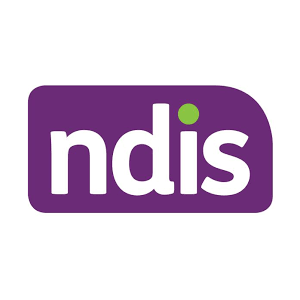Medical conditions and frailty explain why millions of elderly people face issues swallowing their food and require a soft food diet.
If you’re the nurse at home and ‘head chef’ for a loved one requiring soft foods, you may be challenged to prepare pureed foods that are safe, satisfying and nutritionally sound. By following a few basic guidelines and learning the tools and ingredients to use as you care for the elderly in your life, you can take any meal and make it work for just about anyone who must eat a diet of soft foods. Once understood, let your imagination fly and create beautiful meals that contribute to the happiness, health and longevity of your loved one ageing in place.
What is Dysphagia?
Dysphagia combines the Greek words dis (difficulty) and phagia (to eat). Simply put, it’s medical terminology applied to people who have trouble swallowing and describes the uncomfortable feeling that food is being held up on its journey from the mouth to the stomach.
Dysphagia may create difficulties when trying to swallow particular kinds of foods and even liquids. Those coping with the disorder may also cough or choke while eating or drinking. They may feel as though food is caught in their chest or throat. Long-term effects might include chest infections and loss of weight.
What Causes Dysphagia?
Home care agencies and aged care providers all know that older people are prone to dysphagia as the result of living with multiple health problems — especially reflux and weight problems. It can also be caused by stroke, an injury to the head, dementia, and mouth or oesophageal cancer. With so many of us living longer, needing in home care or aged care services, the risks for developing swallowing problems are only increasing.
Tools of the Pureed Food Trade
The two most popular tools for people who require a puréed diet are a food processor and a blender. Some in home care chefs prefer the compact size of a mini-food processor, although a standard size unit can help you prepare larger portions for freezing. Blenders are especially handy if you’re making smoothies and need crushed ice, although they can double as food processors if you keep things simple.
The Right Ingredients
Thickening agents are a central consideration for purée chefs. Professional chefs often make vegetable purées that are fairly thick and use them as a garnish or condiment. For making soups, they are then diluted with a liquid. Certain vegetables which are too watery to give a sufficiently thick puree are thickened with a binding agent like potato puree, cornflour, potato starch or a thick béchamel sauce.
Additionally, there are instant, off the shelf thickeners that provide a honey or nectar thickened consistency by simply adding some water to the suggested amount of thickener. Many are gluten and wheat-free and have been formulated specifically for people who have dysphagia.
A large variety of vegetables lend themselves beautifully to purées. With various thickening agents at your fingertips, just about anything is fair game in your puree regimen when providing in home health care. The following vegetables may easily be puréed with minimal need for thickening:
- Artichoke
- Asparagus
- Eggplant
- Beetroots
- Carrots and other root vegetables
- Celery
- Mushrooms
- Endive
- Cauliflower
- Zucchini
- Chicory
- Spinach
- Fava beans
- Kidney beans
- Lentils
- Chestnuts
- Split peas
- Green peas
- Potato
- Pumpkin
Don’t Forget the Condiments
Flavourful condiments include puréed garlic, watercress, and tarragon. Purées of meat or fish are also prepared and traditionally mixed with a brown or white sauce and are classically used as fillings for things like vol-au-vents, or as a stuffing for artichoke hearts or pancakes. By simply taking a portion size of meat and placing it in the food processor with a little broth or stock and thickener of your liking, you can create a flavourful version of the main course and include your loved one in special family feasts as they are ageing in place and you are providing care in the home.
Winning Plate Appeal for Pureed Entrees and Side Dishes
Plate your pureed foods like a pro with these three easy tips:
- Consistency. A consistent texture helps diners chew and swallow. It also enhances the visual appeal of the meal. Go for a consistency that resembles custard. It should be free of lumps and bumps and never runny.
- Spacing. Give each individual pureed portion a space of its own on the plate.
- Moulds and piping. Moulds can be used to make the pureed food appear to be the original dish. You can also pour your pureed food into a plastic piping bag and use a piping tip to create an eye-pleasing plate!
Foods to Avoid with a Dysphagia Diet
When providing care in the home for people with dysphagia find certain foods are particularly hard to swallow. It’s best to steer clear of:
- Foods with husks. Many fruits, seeds and grains are covered with a dry outer layer, or husk. Multi-grains breads and vegetables such as corn are best avoided.
- Foods with multiple textures. Foods that have a mixed consistency can be difficult to manage those with dysphagia. Things that many of us do without thinking – like dunking a piece of bread into a bowl of soup – are not recommended for folks who have trouble swallowing.
- Stringy beans and other fibrous foods. Certain types of melted cheese, celery stalks as well as pineapple slices and string beans could get stuck on the way down.
- Crumbly foods. Baked goods including crackers, potato chips and toast – or any food that’s crunchy or crumbly – should be left out of the diet plan.
- Hard or dense foods. This includes hard candy, meat that isn’t tender, and many kinds of nuts and seeds.
- Bread. This may or may not be okay for your loved one. Speech pathologists work with dysphagia and can advise on this for each individual.
Appetising Solutions for Dysphagia Patients
If you are the in home care nurse and cook looking after someone with dysphagia, its important to remember that
- Pureed food doesn’t have to be bland and tasteless. Some of the world’s great chefs use pureeing. Get creative!
- People living with dysphagia have the same needs for nutritionally balanced meals as everyone else.
With these factors in mind, here are some simple approaches to pureed dishes that are also delicious.
Breakfast: Coping with dysphagia doesn’t mean we don’t still have active tastebuds! Here are a few ideas to keep in mind:
- If mum or dad loves eggs, prepare pureed eggs – scrambled or poached
- Mashed bananas are really quite tasty
- Prepared with care, cooked cereal is a hearty and satisfying option
- Depending on the patient’s overall health, a glass of fruit juice or cup of coffee can round out a morning meal.
- For a mid-morning boost, give yogurt or applesauce a whirl.
Lunch: Midday presents another opportunity for tasty, nutritious foods.
- Try pureed versions of chicken or tuna salad
- Pureed, canned veggies make a great side
- Scoop some cooked grains and fruit into your food processor and serve up some healthy fibre and carbs
- Soup is a hearty go-to addition, before a meal or served alongside it.
Dinner: Again, think about what you’d like on a plate. Very often, a pureed version can be just moments away. Think about the following:
- Build a pureed combo platter featuring your loved one’s favourite meat, mashed potatoes, and one or two veggies
- Many casserole dishes, stews and quiches can be processed and presented in a bowl
- Add an appropriate accompaniment, like pureed mixed fruit on the side
Following these guidelines will have you ready to relieve the discomfort of dysphagia while awakening the taste buds and becoming a pureed food gourmet your loved one will thank you for in no time.
References
https://www.ncbi.nlm.nih.gov/pmc/articles/PMC3999993
https://eatrightct.wordpress.com/2017/05/22/5-reminders-to-create-the-perfect-puree-plate/
As a leading age care provider, Home Care Assistance offers tailored in-home care services for older Australians, enabling them to live happier and healthier lives in the comfort of their own homes.
We offer private and government subsidised Care Packages and have office locations that are a registered NDIS provider. Our Care Workers undergo extensive training in order to deliver unmatched in-home aged care services where people can continue ageing in place. We are proud ambassadors of the My Aged Care government funded aged care program, enabling Australians to successfully navigate the process and gain approval for in-home care support packages. Home Care Assistance offers hourly care, specialised care, Alzheimer’s and Dementia care, hospital to home care, and 24 hour in home care.













